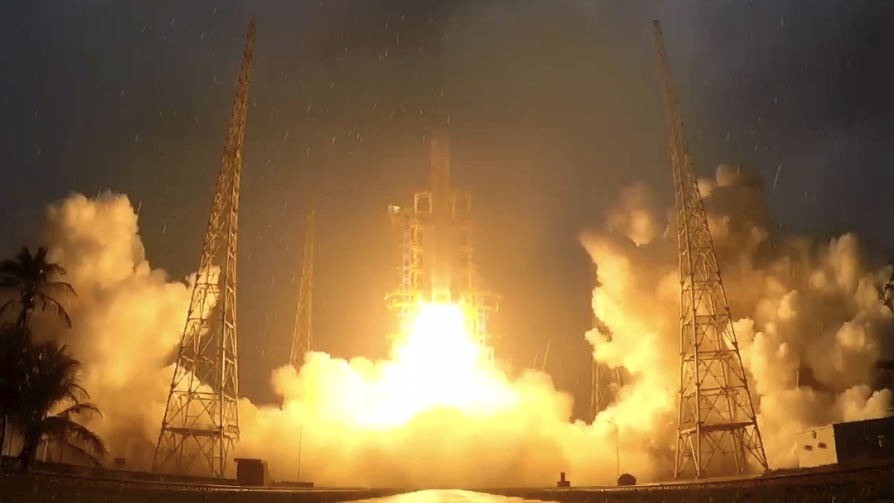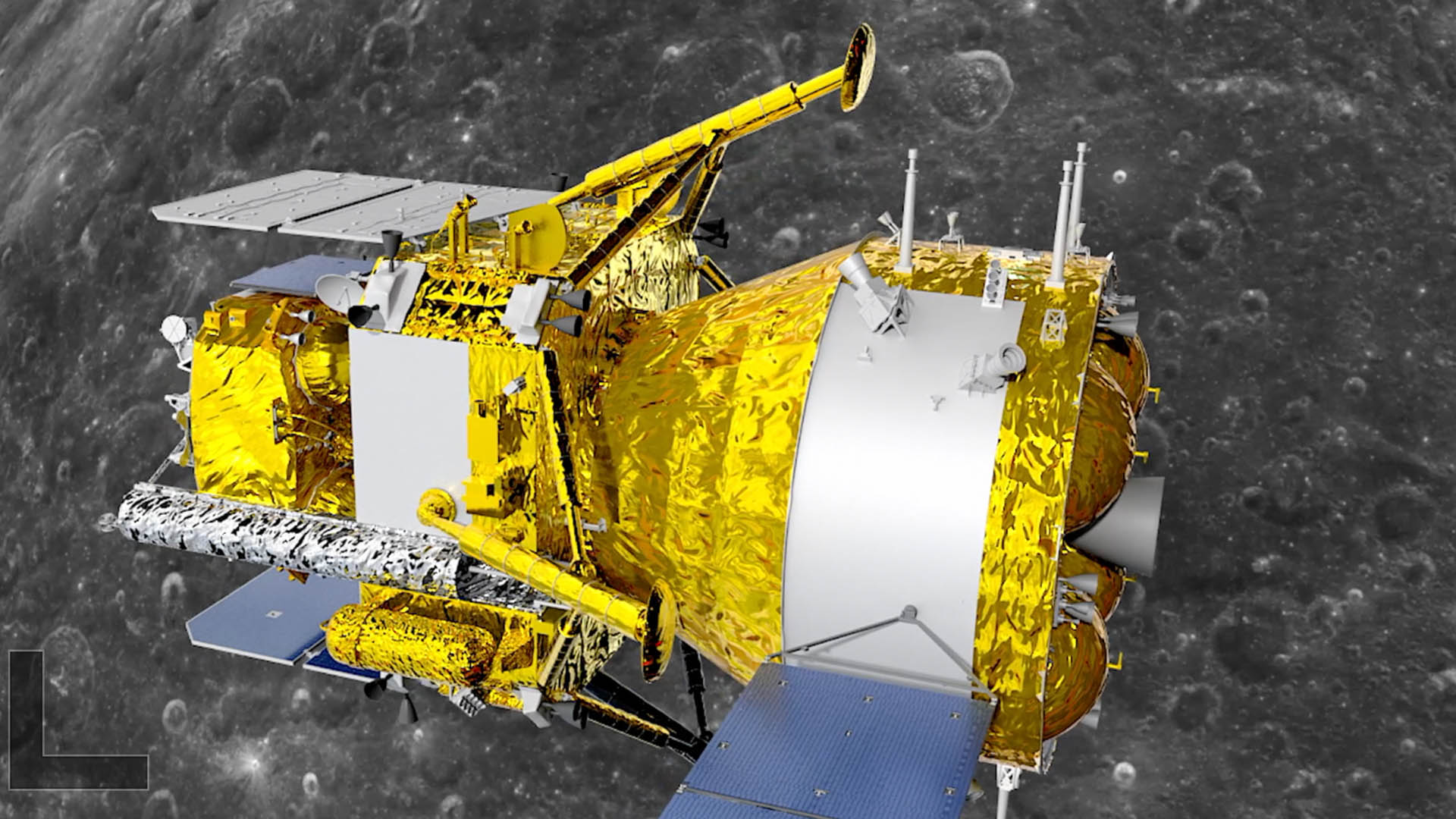00:40

China has announced the successful launch of its latest lunar probe, the Chang’e-6, on Friday, as the spacecraft reached the planned orbit and goes on with its weeks-long journey to the moon.
The probe is expected to bring back 2 kilograms of samples from the far side of the moon, which humans have never done before. China sampled from the near side of the moon in 2020 with the Chang’e-5 mission.
The launch came days after China’s manned space program launched the Shenzhou-18 mission, sending three taikonauts to the China Space Station.
Click here for CGTN’s livestream of the event.
Long March-5 rocket improved for Chang’e-6 mission
The Long March-5 Y8 rocket, carrying the Chang’e-6 probe, blasted off from the Wenchang Spacecraft Launch Site in south China’s Hainan Province.
“This Long March-5 rocket … can haul a heavier probe,” Li Pingqi, with China Aerospace Science and Technology Corporation, told CGTN. He said the Chang’e-6 probe is 100 kg heavier than its predecessor, making it the heaviest probe for China’s deep space missions. “Going to a lunar transfer orbit with an increase of 100 kg is a considerable upgrade for our rocket.”
He said the mission also requires a strict launch window, which has a width of 50 minutes each day for two consecutive days.
Compared to the Chang’e-5 mission rocket, this Long March-5 Y8 rocket catering to the Chang’e-6 mission also has its reliability index up from 0.86 to 0.93.
Probe geared for lunar far side mission
Compared with the Chang’e-5 sample return mission, the Chang’e-6 probe faces a different terrain. To sample-retrieve from the lesser-known far side, it needs a relay satellite for communication and needs to be even more efficient and time-sensitive.
“Though the far side of the moon is more rugged, we can choose a relatively better place to land.” Lu Yuntong at China Aerospace Science and Technology Corporation told CGTN.
02:07

Lu’s colleague Huang Hao said Chang’e-6 carries four international payloads and satellites, including a radon detector from France, a lunar surface negative ion analyzer from the European Space Agency, a laser angle reflector from Italy and a cube satellite from Pakistan.
“The international payload team have together conducted deep and detailed testing work on the payload’s connection and more … to ensure that they can complete their tasks.” Huang said.
Golden opportunity for scientific research
The probe is expected to land in the Aitken Basin in the South Pole of the moon.
“The Aitken Basin is one of the three major terrains on the moon and has significant scientific value,” Ge Ping, deputy director of the Center of Lunar Exploration and Space Engineering with China National Space Administration, told CGTN. “Finding and collecting samples from different regions and ages of the moon is crucial for our understanding of it.”
01:39

Ge also said that when the sample is returned, there will be systematic, long-term laboratory research on the sample, including analysis of its structure, physical properties and composition.
“These would further study of the moon’s origin and its evolutionary history,” Ge said in an interview before the launch.
Scientists have already expressed a wide range of interest in the samples, according to Wang Qiong, deputy chief designer of the Chang’e-6 mission.
“We will definitely see more influential results,” Wang said.
(Sun Ye, Liu Yuyao and Gong Zhe contributed to the story.)
